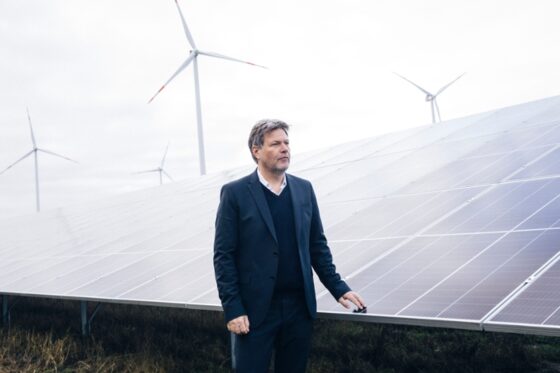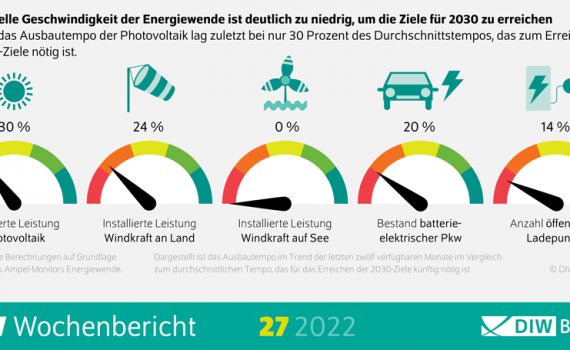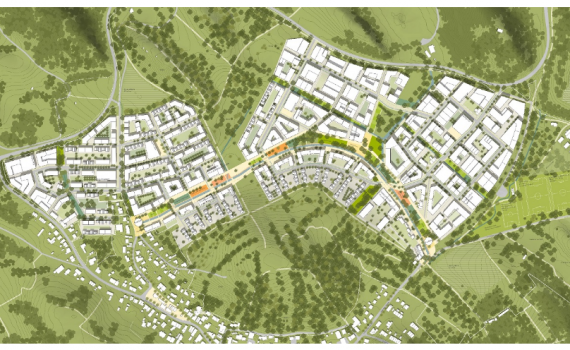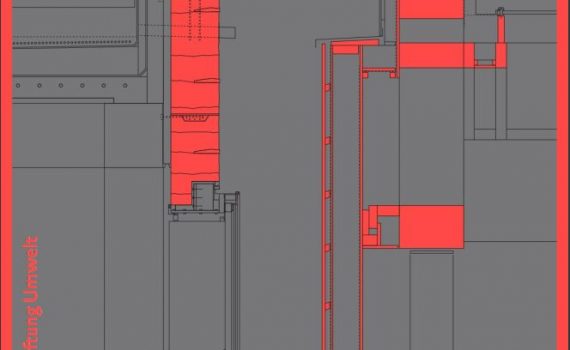Holz gehört zu den ältesten Werkstoffen dieser Welt und erfährt gerade im Bau eine Renaissance. Seit 2017 unterstützt das Ministerium für Heimat, Kommunales, Bau und Digitalisierung des Landes Nordrhein-Westfalen das „Bauen mit Holz”: Im Zuge der öffentlichen Wohnraumförderung des Landes Nordrhein-Westfalen oder über die Städtebauförderung des Landes und des Bundes […]
Kategorie für Blog: Ecology
 Samstag, 15. Juni 2024
14.00 Uhr Eröffnung
mit Bürgermeisterin Monika Neuhöfer-Avdić
und Singer-Songwriter Auftakt
15.00 Uhr Vernissage
„Zeitzeugen der Lauffenmühle“
15.30 Uhr Vernissage „Lokale Kunstschaffende“
16.30 Uhr Narrenzunft Lörrach
„S‘isch wie‘s isch“
17.30 Uhr Peter Reimtgut
„Das ist Leben“
19.00 Uhr The Kerstin
„slightly distracted“, mit Pheat
Sonntag, 16. Juni 2024
11.00 Uhr Narrenzunft Lörrach
„S‘isch wie‘s isch“
12.00 Uhr Hellbergschule
mit Musik- und Tanz-AG
14.00 Uhr Führung
über das Lauffenmühle-Areal
15.00 Uhr Nachbarschaftstreff
mit Kaffee und Kuchen
15.30 Uhr „ALFA“ Percussion Ensemble
Städtische Musikschule
16.00 Uhr Bands „Greenhorns“ und „Marshmallow
Fighters“, Städtische Musikschule
17.00 Uhr Führung über das Lauffenmühle-Areal
18.00 Uhr Performance „Brunch Boys“
mit Schlagzeug und Effekten
Samstag, 15. Juni 2024
14.00 Uhr Eröffnung
mit Bürgermeisterin Monika Neuhöfer-Avdić
und Singer-Songwriter Auftakt
15.00 Uhr Vernissage
„Zeitzeugen der Lauffenmühle“
15.30 Uhr Vernissage „Lokale Kunstschaffende“
16.30 Uhr Narrenzunft Lörrach
„S‘isch wie‘s isch“
17.30 Uhr Peter Reimtgut
„Das ist Leben“
19.00 Uhr The Kerstin
„slightly distracted“, mit Pheat
Sonntag, 16. Juni 2024
11.00 Uhr Narrenzunft Lörrach
„S‘isch wie‘s isch“
12.00 Uhr Hellbergschule
mit Musik- und Tanz-AG
14.00 Uhr Führung
über das Lauffenmühle-Areal
15.00 Uhr Nachbarschaftstreff
mit Kaffee und Kuchen
15.30 Uhr „ALFA“ Percussion Ensemble
Städtische Musikschule
16.00 Uhr Bands „Greenhorns“ und „Marshmallow
Fighters“, Städtische Musikschule
17.00 Uhr Führung über das Lauffenmühle-Areal
18.00 Uhr Performance „Brunch Boys“
mit Schlagzeug und Effekten
Die EU-Staaten haben endgültig grünes Licht für die überarbeitete Richtlinie zur Energieeffizienz von Gebäuden gegeben und die neuen Vorgaben formell beschlossen. Kadri Simson, EU-Kommissarin für Energie, begrüßte das Votum: „Eine bessere Gesamtenergieeffizienz von Gebäuden ist von entscheidender Bedeutung, um unser Ziel der Klimaneutralität zu erreichen und die Energieunabhängigkeit Europas zu stärken. Renovierungen sind Investitionen in eine bessere Zukunft.“
 Net public electricity generation reached a record share of 59.7 per cent in 2023. The share of the load was 57.1 per cent. This is the result of an analysis presented today by the Fraunhofer Institute for Solar Energy Systems ISE. New records were set for wind and solar power in 2023. In contrast, generation from lignite (-27 per cent) and hard coal (-35 per cent) fell sharply. Photovoltaics stood out in the expansion of generation capacity: at around 14 gigawatts, the expansion was in double digits for the first time and significantly exceeded the German government's statutory climate protection target.
Net public electricity generation reached a record share of 59.7 per cent in 2023. The share of the load was 57.1 per cent. This is the result of an analysis presented today by the Fraunhofer Institute for Solar Energy Systems ISE. New records were set for wind and solar power in 2023. In contrast, generation from lignite (-27 per cent) and hard coal (-35 per cent) fell sharply. Photovoltaics stood out in the expansion of generation capacity: at around 14 gigawatts, the expansion was in double digits for the first time and significantly exceeded the German government's statutory climate protection target.
More rail transport, reformed motor vehicle tax and less fossil heating needed
 Germany can still achieve its climate targets by 2030. This is shown in a new analysis by the Federal Environment Agency (UBA). This would require, among other things, more rail transport, a reform of the motor vehicle tax and the restriction of fossil heating. In addition, all emissions would have to be priced and charged to the polluter. In the so-called Climate Protection Instruments Scenario 2030 (KIS-2030), the UBA has examined how additional emissions can be saved in the building, mobility, energy and industry sectors. "The model calculation clearly shows that we have a lot of catching up to do in some sectors," says UBA President Dirk Messner. "We now urgently need a constructive dialogue about where emissions can be reduced, otherwise we will miss the legal savings targets. We also need to talk honestly about how to cushion the financial burden on lower-income groups and distribute it more fairly. Currently, low-income households are often asked to pay disproportionately. Understandably, this does not exactly increase acceptance for more climate protection.
Germany can still achieve its climate targets by 2030. This is shown in a new analysis by the Federal Environment Agency (UBA). This would require, among other things, more rail transport, a reform of the motor vehicle tax and the restriction of fossil heating. In addition, all emissions would have to be priced and charged to the polluter. In the so-called Climate Protection Instruments Scenario 2030 (KIS-2030), the UBA has examined how additional emissions can be saved in the building, mobility, energy and industry sectors. "The model calculation clearly shows that we have a lot of catching up to do in some sectors," says UBA President Dirk Messner. "We now urgently need a constructive dialogue about where emissions can be reduced, otherwise we will miss the legal savings targets. We also need to talk honestly about how to cushion the financial burden on lower-income groups and distribute it more fairly. Currently, low-income households are often asked to pay disproportionately. Understandably, this does not exactly increase acceptance for more climate protection.
The Federal Cabinet today approved the draft of a timber construction initiative presented by Federal Minister of Construction Klara Geywitz and Federal Minister of Agriculture Cem Özdemir. This strategy of the Federal Government is intended to strengthen the use of wood as a sustainable raw material in the construction sector and to ensure more climate protection, resource efficiency and faster construction. With eight fields of action, from the exemplary role of the federal government and the strengthening of research and innovation, to securing skilled labour and knowledge transfer, to securing the supply of raw materials, the use of wood is to be significantly improved and the timber construction quota increased by 2030.
Scientific scenarios on climate neutrality support corporate strategy and planning on the path to decarbonisation - Using the example of buildings and heating, climate economists at DIW Berlin analyse existing scenarios on climate neutrality - Net zero scenarios show a clear path for the transformation of companies and the financial sector - With standardised scenarios and transition plans for climate neutrality, banks, funds and insurance companies can make their portfolios fit for the future.
On 16 June, the member states of the European Union approved a comprehensive revision of the EU Renewable Energy Directive (RED) in the Committee of Permanent Representatives. The European target for renewable energies will thus be significantly increased from the previous 32% to 45% in 2030. This means a doubling of the share of renewable energy compared to the level reached in 2021 of just under 22%. This is a great success for the expansion of renewables: It roughly doubles the planned expansion of renewable energy by 2030. To achieve the new targets, more than 100 GW of new wind turbines and solar installations will be installed in the EU every year. For Germany, this means that the significantly increased expansion targets for wind and solar energy in 2022 will be underpinned by European targets and become binding. The higher EU targets also form the framework for further measures and targets in the EU, such as the EU's solar strategy, which aims to roughly triple PV capacity to 600 GW by 2030.
PV strategy presented
 Today, Federal Minister of Economics and Climate Protection Robert Habeck presented the second PV-The aim is to significantly accelerate the expansion of solar energy in Germany. The goal is to significantly accelerate the expansion of solar energy in Germany. To this end, the strategy identifies measures in a total of eleven fields of action. The spectrum ranges from measures in the area of energy policy to the topics of securing skilled labour, industrial value creation in Europe and technology development. This was preceded by a first photovoltaic summit in March 2023. Since March, the PV strategy has been consulted. More than 600 comments were received.
Today, Federal Minister of Economics and Climate Protection Robert Habeck presented the second PV-The aim is to significantly accelerate the expansion of solar energy in Germany. The goal is to significantly accelerate the expansion of solar energy in Germany. To this end, the strategy identifies measures in a total of eleven fields of action. The spectrum ranges from measures in the area of energy policy to the topics of securing skilled labour, industrial value creation in Europe and technology development. This was preceded by a first photovoltaic summit in March 2023. Since March, the PV strategy has been consulted. More than 600 comments were received.- One third of homeowners plan to install in the next twelve months
- High electricity prices fuel demand for cheap solar energy
- Online survey of 1,000 people - representative survey by age and gender
Proven work aid and at the same time standard work for climate protection work in municipalities can be used digitally in future. Difu, ifeu and Climate Alliance developed the guide on behalf of the BMWK.
The bioeconomy can be a central building block for the transformation of our largely coal, oil and gas-based economy. However, renewable raw materials and synthetic carbon compounds are scarce and expensive. They should be used in areas such as the chemical industry - not as energy sources. For the shift from a fossil-based economy to a bioeconomy to succeed, fossil carbon must also become more expensive. The ifeu now presents the results of four trend-setting studies.
The housing shortage is an immense social problem in many large cities and conurbations. At the same time, the building sector has been failing to meet its environmental and climate targets for years. In a recent position paper, the Federal Environment Agency (UBA) and the Commission for Sustainable Building at the UBA (KNBau) have examined how more affordable housing can be created without unnecessarily harming the environment and health. According to this paper, the most important factor for more environmental protection in housing construction is that the existing building stock is preserved wherever possible or is sensibly converted and repurposed. This is the easiest way to avoid climate emissions and unnecessarily high consumption of raw materials. Today, UBA President Prof. Dr. Dirk Messner presented KNBau's proposals to Federal Minister of Building Klara Geywitz and Federal Minister of the Environment Steffi Lemke in Berlin.
 The Federal Ministry of Transport, Building and Urban Affairs is supporting the climate-friendly construction of new buildings with a new funding programme that will start on 1 March 2023. For the first time, the entire life cycle of a building will be considered - from construction to operation to potential deconstruction in the distant future. The buildings are characterised by low greenhouse gas emissions in the life cycle, high energy efficiency, low operating costs and a high proportion of renewable energies for the generation of heat and electricity. This funding thus makes a contribution to climate protection and to meeting national climate targets.
The Federal Ministry of Transport, Building and Urban Affairs is supporting the climate-friendly construction of new buildings with a new funding programme that will start on 1 March 2023. For the first time, the entire life cycle of a building will be considered - from construction to operation to potential deconstruction in the distant future. The buildings are characterised by low greenhouse gas emissions in the life cycle, high energy efficiency, low operating costs and a high proportion of renewable energies for the generation of heat and electricity. This funding thus makes a contribution to climate protection and to meeting national climate targets.
The first results of the timber housing study will be presented at the 15th Congress on Efficient Building with Wood in Urban Areas on 19 October 2022 in Cologne. So far, 118 large-volume housing projects with more than 100 units have been identified across Europe by the HFR researchers, 47 of which are located in Germany. Final results will be presented in early December at the 26th International Timber Construction Forum in Innsbruck on 30 November 2022 and will also be published in a brochure by Informationsdienst Holz.
The "Climate Adaptation Check" is a new orientation aid for NRW municipalities. The federal state passed the first climate adaptation law in Germany in 2021. The check supports NRW municipalities in implementing the new requirement for consideration. Berlin/Cologne. The consequences of climate change have long been felt in German municipalities: more frequent heavy rainfall events, flooding, storms as well as heat waves and prolonged drought. Cities, [...]
Researchers at DIW Berlin have developed the "Ampel-Monitor Energiewende" - monitor the extent to which the government's energy policy agenda is being implemented - immense efforts are needed to close the gap between the announced targets and the current status quo
Thüga closed the 2021 financial year with a good result. The approximately 100 municipal utilities and regional suppliers of the Thüga Group fully fulfilled their supply mandate and continued to drive forward the energy turnaround despite burdensome general conditions.
Is German climate policy on the right path? A national CO2 budget for Germany allows for a transparent comparison with international targets. In a paper published today, the Environmental Council updates its calculations for a German CO2 budget, showing that fast emission reductions are crucial - last year, climate targets for transport and buildings were missed again. The paper also answers frequently asked questions about the CO2 budget.
Germanwatch now urgently expects political signals following the conclusion of the interim technical negotiations / Special challenge on the issue of damage and loss recognised, now it is a matter of concrete financing proposals
More and more companies, but also private households, are using the sun's energy to generate electricity: In March 2022, 2.2 million photovoltaic systems with a total nominal output of 58,400 megawatts were installed on roofs and properties. As reported by the Federal Statistical Office (Destatis), the number of systems thus increased by 10.1 % compared to the same month of the previous year, while the installed capacity rose by 9.7 % within a year. In January 2018, when the figure was first collected, there had been a good 1.7 million installations with a nominal capacity of 42,300 megawatts. Since then, the number of turbines has risen by just under 34.0 %, while installed capacity has increased by 38.3 %.
The cities propose to strengthen and accelerate local climate protection through a new financial support system. The German Association of Cities today published a concept and a publication on its website.
Recommendations from the BMBF project "Urban Heat Transition" were published: ► Consistently tapping alternative heat sources such as wastewater heat ► Convert public buildings to renewable heat and create neighbourhood heating networks ► Ambitious energy refurbishment in neighbourhood conservation areas to keep rents affordable
 The Federal Cabinet today adopted the so-called Easter Package at the proposal of Vice Chancellor and Federal Minister for Economic Affairs and Climate Protection Robert Habeck. This is the largest amendment to energy policy legislation in decades. The Easter Package comprehensively amends various energy laws in order to accelerate and consistently drive forward the expansion of renewable energies.
The Federal Cabinet today adopted the so-called Easter Package at the proposal of Vice Chancellor and Federal Minister for Economic Affairs and Climate Protection Robert Habeck. This is the largest amendment to energy policy legislation in decades. The Easter Package comprehensively amends various energy laws in order to accelerate and consistently drive forward the expansion of renewable energies.
 After a significant decline in the previous year, greenhouse gas emissions in Germany are on the rise again. Thus, around 762 million tonnes of greenhouse gases were released in 2021 - a good 33 million tonnes or 4.5 percent more than in 2020. Overall, emissions in Germany have thus fallen by 38.7 percent since 1990. The increase in the last year is particularly noticeable in the energy sector: This shows an increase of 27 million tonnes CO2-equivalents, as increased demand for electricity, lower electricity generation from renewable energies and the higher gas price led to increased use of coal for electricity generation. Electricity generation from renewables fell by seven per cent, mainly due to poor wind conditions. In the transport and building sectors, emissions were above the annual ceilings set by the Federal Climate Protection Act. This is shown by the latest calculations of the Federal Environment Agency (UBA), which are based on the specifications of the Federal Climate Protection Act and the EU-Renewable Energy Directive (RED) were presented today.
After a significant decline in the previous year, greenhouse gas emissions in Germany are on the rise again. Thus, around 762 million tonnes of greenhouse gases were released in 2021 - a good 33 million tonnes or 4.5 percent more than in 2020. Overall, emissions in Germany have thus fallen by 38.7 percent since 1990. The increase in the last year is particularly noticeable in the energy sector: This shows an increase of 27 million tonnes CO2-equivalents, as increased demand for electricity, lower electricity generation from renewable energies and the higher gas price led to increased use of coal for electricity generation. Electricity generation from renewables fell by seven per cent, mainly due to poor wind conditions. In the transport and building sectors, emissions were above the annual ceilings set by the Federal Climate Protection Act. This is shown by the latest calculations of the Federal Environment Agency (UBA), which are based on the specifications of the Federal Climate Protection Act and the EU-Renewable Energy Directive (RED) were presented today.
A regenerative heat supply and an innovative rainwater management system are being designed for the "ecoSquare" neighbourhood in Bamberg. Michael Richter and Wolfgang Dickhaut are in charge of the project.
 Fig.: Naturstrom AG
NATURSTROM is expanding its largest local heating project to date in Markt Erlbach, Franconia. In future, the green energy supplier will supply over 130 customers with sustainable and locally generated heat - including households, municipal buildings and a large commercial enterprise. Bavaria's largest solar thermal plant is being built on an area of 2,400 m2 for this purpose.
Fig.: Naturstrom AG
NATURSTROM is expanding its largest local heating project to date in Markt Erlbach, Franconia. In future, the green energy supplier will supply over 130 customers with sustainable and locally generated heat - including households, municipal buildings and a large commercial enterprise. Bavaria's largest solar thermal plant is being built on an area of 2,400 m2 for this purpose.
[caption id="attachment_28516" align="alignleft" width="560"] Award-winning project "Stadt Landschaft Burg" of the Federal Prize 2020 - © Bundespreis Stadtgrün / Hergen Schimpf[/caption]
The Federal Ministry of Housing, Urban Development and Building today announced the Federal Urban Green Award 2022. This year, the focus is on the topic of "Climate adaptation and quality of life".
Federal Minister Klara Geywitz: "Climate change is a stress test for our cities. We need more trees for a better urban climate, we need soils that can absorb heavy rainfall, we need less sealed surfaces for more biodiversity and to prevent residential neighbourhoods from heating up. With the Federal Urban Green Award 2022, we are honouring the pioneering work that is already shaping the necessary transformation of cities."
Award-winning project "Stadt Landschaft Burg" of the Federal Prize 2020 - © Bundespreis Stadtgrün / Hergen Schimpf[/caption]
The Federal Ministry of Housing, Urban Development and Building today announced the Federal Urban Green Award 2022. This year, the focus is on the topic of "Climate adaptation and quality of life".
Federal Minister Klara Geywitz: "Climate change is a stress test for our cities. We need more trees for a better urban climate, we need soils that can absorb heavy rainfall, we need less sealed surfaces for more biodiversity and to prevent residential neighbourhoods from heating up. With the Federal Urban Green Award 2022, we are honouring the pioneering work that is already shaping the necessary transformation of cities."
The property developer WvM Immobilien + Projektentwicklung GmbH and the eco-energy supplier NATURSTROM AG found the joint company Green Estate. With the fusion of energy and real estate know-how, the partners are taking a new path to enable people to live sustainably.
at the Sustainable Procurement Symposium in Dortmund on 26 August 2021 The Sustainable Procurement Day is a platform for exchange for procurers and decision-makers from municipalities, private and public institutions as well as churches and companies. Federal Environment Minister Svenja Schulze is the patron. The Agency for Renewable Resources e. V. (FNR), project management agency of the Federal Ministry of Food and Agriculture, will be represented with a workshop on the topic of "Public building and renovation with wood - the right way to tender for timber construction projects" in addition to the stand "The renewable office".
 With a very large majority, the municipal council decided on 22.07.2021 to initiate the urban development measure (SEM) "Nördlich Hafner". The development statute provides the project with a binding legal framework for the city of Constance and the remaining property owners in the area. The decision is also the conclusion of the preparatory studies (VU) that have been running for about four years, in which not only various subject-related studies and the urban development framework plan were developed, but also a comprehensive timetable and a detailed cost and financing overview were drawn up. The development of the approx. 106 ha area (of which approx. 60 ha are residential areas) including all technical and social infrastructures (e.g. day-care centres, primary school) will cost a total of almost 420 million euros. Income from the allocation of land will ultimately result in a largely balanced overall balance.
With a very large majority, the municipal council decided on 22.07.2021 to initiate the urban development measure (SEM) "Nördlich Hafner". The development statute provides the project with a binding legal framework for the city of Constance and the remaining property owners in the area. The decision is also the conclusion of the preparatory studies (VU) that have been running for about four years, in which not only various subject-related studies and the urban development framework plan were developed, but also a comprehensive timetable and a detailed cost and financing overview were drawn up. The development of the approx. 106 ha area (of which approx. 60 ha are residential areas) including all technical and social infrastructures (e.g. day-care centres, primary school) will cost a total of almost 420 million euros. Income from the allocation of land will ultimately result in a largely balanced overall balance.
 Author of the book review: Roman Schaurhofer, Vienna
The construction volume "Commercial Buildings in Clay and Wood - Added Value through Material" was published in 2020 by Sabine Djahanschah of the Deutsche Bundesstiftung Umwelt (German Federal Foundation for the Environment) at Verlag Detail. The publication, which appeared in book form, deals with the use of the building materials wood and clay in the construction of commercially used buildings. To this end, six buildings with commercial use were analysed in terms of their architectural construction and technical quality features and evaluated with the help of measurements, surveys and life cycle assessments.
Author of the book review: Roman Schaurhofer, Vienna
The construction volume "Commercial Buildings in Clay and Wood - Added Value through Material" was published in 2020 by Sabine Djahanschah of the Deutsche Bundesstiftung Umwelt (German Federal Foundation for the Environment) at Verlag Detail. The publication, which appeared in book form, deals with the use of the building materials wood and clay in the construction of commercially used buildings. To this end, six buildings with commercial use were analysed in terms of their architectural construction and technical quality features and evaluated with the help of measurements, surveys and life cycle assessments.
Sascha Müller-Kraenner, Federal Director of Deutsche Umwelthilfe (DUH), comments on today's debate on the Renewable Energy Sources Act (EEG) in the Bundestag: "The Grand Coalition is breaking its promise to set higher expansion targets for renewable energies for the year 2030 before the end of this legislative period. An agreement failed primarily due to the energy transition obstructionists within the CDU/CSU parliamentary group. The German government is thus ignoring the implementation of the new EU climate targets and disregarding the decision of the Federal Constitutional Court to tackle more ambitious climate protection measures before 2030. The amendment to the Renewable Energy Sources Act is missing the centrepiece. At the end of 2020, Federal Minister for Economic Affairs Peter Altmaier announced an ambitious expansion path for wind and solar energy for the first quarter of 2021. After a long wait, there was only the famous drop in the ocean: four gigawatts of onshore wind energy and six gigawatts of photovoltaics are the targets for 2022. Longer-term expansion targets? Not a chance. Clearly, the need for a rapid transformation of our energy supply has not yet been recognised by the CDU/CSU, despite all their climate protection commitments during the election campaign."
The passive house turns 30 - pioneering work paves the way for energy efficiency worldwide The passive house celebrates its 30th birthday! The pioneering project started as an experiment by building physicist Prof Wolfgang Feist can take great credit for its success: When climate protection was only on the agenda for very few people, it paved the way for energy efficiency in buildings. Today, the passive house standard is being realised around the world, including in impressive flagship projects. Further reasons to celebrate: the 25th anniversary of the Passive House Institute and the anniversary edition of the International Passive House Conference.




















